Inclusion Beyond Tolerance.
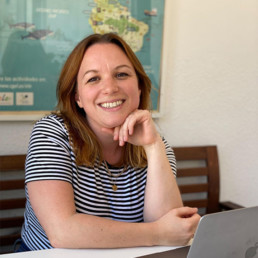
Written by Claire Stancliffe
Claire Stancliffe is an education consultant specialising in gender equity, diversity & inclusion and positive masculinities. She’s on a mission to break down gender stereotypes in schools.
Pride month is well underway, and it’s got me thinking about the thorny issue of tolerance. It’s a word we hear often associated with diversity in general, but very commonly with the LGBTQIA+ community. Tolerance is the idea that we do not need to understand someone to be able to get along with them. That we can all rub along together, to live and let live. Sounds harmless enough right? Yet if I told you I would tolerate your company for the evening, I don’t think you would be thrilled.
When it comes to inclusion, the notion of tolerance falls short. It says, “I don’t mind you breaking the rules”, while all the time upholding and even strengthening social norms. Due to religious differences, the ways we have been socialised and the norms of our various cultures, it will never be possible to create a world where we all see eye to eye on everything, but if we want to encourage true inclusion I think we need to look beyond tolerance, to a more expansive view of what exactly ‘normal’ is.
Breaking gender stereotypes
Up until very recently, our frame of reference for ‘normal’ when it comes to how we raise our children has been cis-heteronormative – that is that everyone’s gender is that which is assigned at birth (or ‘cisgender’), the expectation that all people are or will be heterosexual (or ‘straight’), and that girls behave according to one set of rules, and boys behave according to another. This has led to harmful stereotypes that perpetuate inequality.
It struck me recently that when we encourage young people to see past the narrow confines of gender stereotypes, we are often doing so from a tolerance perspective. By pointing out that it’s possible to break the norm, we can inadvertently reinforce it. It’s ok for girls to be good at maths, but it’s not part of the norm. It’s ok to marry someone of the same gender, for example, but it’s not part of the norm. It’s ok for a boy to wear makeup, but it’s not part of the norm. The terms ‘male nurse’ and ‘lady doctor’ that are still so commonly used come to mind here.
For children, and indeed all people, breaking away from the group and doing something that’s perceived as different can be a stressful position. Many of us avoid taking the risk, preferring to go along with the crowd and feel acceptance, which can severely limit our options for happiness.
Redefining the norm
Breaking gender stereotypes is not just about allowing exceptions; it’s about redefining what the norm can be. This requires creating environments where diversity in gender expression and identity is not just tolerated but celebrated.
Here are three strategies that I think can shift the dial in a positive direction.
- Provide diverse role models whenever possible. Consider where you have the opportunity to showcase different stories – can a maths word problem include a scenario with two mums; a girl playing with toy cars; a boy buying nail varnish? Invite a diverse range of professionals to come and speak to your class that counter common stereotypes, and remember to include men who enter caring professions, for example, as well as women in STEM. The more possibilities children are exposed to, the broader their horizons grow in terms of futures they imagine for themselves.
- Watch your language. Use gender-neutral terms where possible, and certainly for all job roles. Instead of ‘fireman’ use ‘firefighter’, for example, and instead of ‘lollipop lady’, try ‘crossing guard’. When referring to the group, avoid using gender identifiers unless it’s relevant. Instead of ‘boys and girls’, use terms like ‘team’, ‘class’, ‘everyone’. Small changes can make a big difference in how children interpret the world around them and the choices open to them.
- Actively challenge stereotypes. Don’t shy away from discussing stereotypes when they come up, but approach it with curiosity. Try asking ‘what makes you say that?’ and engaging as the young person explains their point of view. Highlight examples from their real lives that go against stereotypes, and encourage them to think about stereotypes that they themselves might defy. This can help them start to question the validity of broad, catch-all statements.
As adults, we can influence the way young people see the world and their place within it. So let’s move past a tolerance mindset, to one that truly celebrates them for who they are, that helps them connect to others they identify with, and that cheers them on as they grow into who they are really meant to be.
What Could Sustainable Teacher Recruitment Campaigns Look Like?
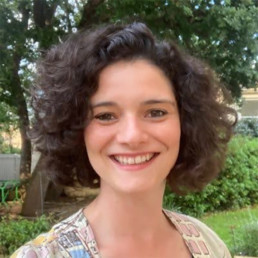
Written by Emma Sheppard
Emma founded The MTPT Project, the UK's charity for parent teachers, in 2016 when on maternity leave with her first child. She has 12 years experience as an English teacher, Lead Practitioner and ITT Lead, and now runs The MTPT Project full time.
When I trained to teach in 2010, I was drawn into the profession by the motivation to Make a Difference. I wanted to be a Changemaker; to have Social Impact; to Do Good. And I was willing to work all hours and make sacrifices to – essentially – satisfy my guilty white saviour complex.
Maybe that’s a little cutting: after all, a sense of moral purpose and the pursuit of meaningful work are values to live and stand by.
But, two years later, after missing holidays with my family, developing chronic migraines and unable to identify any other hobbies beyond the bassoon that I had once enjoyed (but no longer had time to play), I burnt out and quit UK education for a stint in an international school, and the luxury of an expat lifestyle.
Vivid memories of two recruitment videos remain with me from this time. In the first, a young man rides to school in the dark, and is the first in the building to switch on the lights. He excels at his job, cares for his students. At no point do we see him doing anything other than living and breathing teaching.
In the second, a young man wakes up, arrives at school, and we jump between his previous office job (dull) and his current teaching role (fulfilling). At dinner time, he talks about how great teaching is and then gets into bed, and the cycle repeats itself. At no point is there anything in his life other than teaching (and the back of his girlfriend’s head).
There is nothing incorrect about either advert: teaching is a brilliant and life-affirming career. And – let’s admit it – as teachers, we do love to regale our friends and family members with hilarious school anecdotes at every opportunity. The kids are the best bit. Indeed, both adverts are powerful appeals to potential recruits who want to do nothing but teach.
But for how long do we want to – or are we capable of – martyring our whole lives to our profession?
Surely, if we want to see improved teacher retention, we need recruitment campaigns that sell teaching as a career choice that allows for a life beyond the classroom?
This is where a recent video from Reach Teacher Training has got things so right. Like the videos previously mentioned, this advert follows two teachers from the start to the end of their working day, but the marketing team behind this piece have made some deliberate directorial decisions about the culture that new recruits can expect at Reach.
In the first iteration of the video – a 29 second clip – Reach dedicate 6 seconds to images of one of the teachers hugging her own child and waving goodbye at the door before she drives away. That is 21% of expensive marketing time given over to stating that teaching is a family-friendly career choice – at least at a Reach Academy.
In the second version of the video, Reach set aside a glorious 23 seconds (of 55 seconds in total, so 42% of the entire clip) to the life-friendly nature of their school. The first teacher joins her running club to run home with her pals in the sunshine. Meanwhile, we zoom in to the second teacher closing her laptop and checking her watch as she finishes her day. Her watch says 15:54 and, presumably, she’s on her way to school pick-up.
In both videos, we see the teachers enjoying animated conversations with their students. We see them delivering excellent lessons. We see them Making a Difference.
Indeed, the text that accompanies the social media posts sharing these videos reads: Join our community; Change lives; Train to teach.
But unlike those adverts that drew me into a military lifestyle of teaching that – as a 22-year-old with no real prior experience of the workplace – I could not sustain, these adverts state very clearly that the dream is possible. Teaching is a life-friendly career, state Reach, and one that you can enjoy for years to come around all the other beautiful moments that life will offer you.
Bravo, Reach Teacher Training, and the team behind your recent recruitment video.
Pride Month 2024 - Responding to homophobic language: guidance for schools using Oracy and No Outsiders
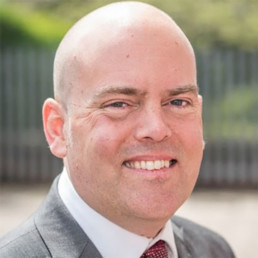
Written by Andrew Moffat
Andrew Moffat has been teaching for 25 years and is currently PD Lead at Excelsior MAT. He is the author of “No Outsiders in our school: Teaching the Equality Act in Primary Schools” and “No Outsiders: everyone different, everyone welcome”. In 2017 Andrew was awarded a MBE for services to equality and diversity in education and in 2019 he was listed as a top ten finalist in the Varkey Foundation Global Teacher Prize.
Ensuring equality for all cannot be achieved if any group of people feel they are unseen, unwelcome or feel targeted because of the person they are. As teachers, we strive to ensure that everyone feels seen, everyone feels welcome, and no one feels they have to hide their true selves, or parts of their identity.
In preparing children for life in modern Britain, we need to be clear and consistent in our efforts to make schools a safe place where children understand there are different ideas in society and prejudice may exist in the outside world, but prejudice and discrimination do not exist here, because in our school, there are “No Outsiders” and everyone is welcome.
Children are allowed to hold different views. I am a big champion of oracy as it encourages children to see both sides of a debate and understand it is possible to hold two views at one time. However, while different views are embraced, the othering of a group of people is not allowed. A child can disagree with a point of view and still show respect; this is the golden thread of a no outsiders ethos.
If a child chooses to use homophobic language, this must be tackled immediately. Children must understand there is no tolerance of prejudice at our school. It is the job of any adult to respond to homophobic language, as this is a safeguarding issue (KCSIE, 2023, “Children who are LGBT” page 51),
A quick response is; “Excuse me?” or, “What do you mean by that?” followed by, “And what do we say at our school?” to which the expected reply is “There are no outsiders”. Reiterate, “That’s right, there are no outsiders here, so you need to think about the language you are using. How are you going to put that right?”
All homophobic incidents should be recorded, and parents informed.
If homophobia arises in a debate where no individual is being targeted but there are attitudes forthcoming that need to be addressed, make sure they don’t go unchecked. An oracy framework enables us to challenge such attitudes effectively by asking the class to respond; “Would anyone like to respond to that?”. If the comment is offensive, for example if a child says, “gay people are wrong” it’s important that the adult responds immediately along the lines of;
“Can we think about the language we are using here… those ideas may exist in the outside world, but we need to be really careful about the words we use here. To say something is ‘wrong’ is different to saying, you ‘don’t agree’ with it. Do you want to re-phrase so that you are not othering anyone or being offensive?”
“What does the law say about this?” (The Equality Act, British law says it’s ok to be LGBT)
“What do we say at our school about different people?” (We say there are no outsiders, and everyone is welcome here.)
It’s vitally important the teacher addresses the attitudes while not giving their own opinion so we don’t get in to an argument or lead the children down any particular path. What we need to do instead is remind children it is ok to hold different views (“and that’s what makes this debate so interesting”) and we can still show respect and non-judgement. It’s ok to disagree with one another, the important thing is that everyone still feels they have a place here, including the child who is being offensive. It is the child’s views that are not welcome; the child is still welcome.
If a child brings their faith into the discussion; “My religion says it’s wrong”, respond in this way:
“You’re right, there are different views about this in different religions. And that’s the best thing about living in the UK- we have different views and beliefs, freedom of speech and democracy, and we have the Equality Act which protects religion and belief, so people are allowed to hold those views under British law. Who else is protected under the Equality Act? (disability, age, race, pregnancy and maternity, marriage and civil partnership, sex, LGBT) hmmm that’s interesting isn’t it – on the one hand you have religion and belief and on the other you have LGBT … both protected, both allowed… so I suppose we have to find a way to respect both views. We can co -exist without saying the other is wrong….”
And then open out the conversation, move it along using the oracy technique; “Who wants to build on that?”
Keep coming back to “That’s why we say there are no outsiders… we can have different opinions, and we can still respect each other. No one is pushed out because of their religion, their race, or because of their sexual orientation.”
I recognise that these conversations are not easy but they are important and we need to be having them with our children. My advice is to practice responses with each other as a staff team.
Here are some useful assembly links from www.no-outsiders.com:
https://no-outsiders-assembly.blogspot.com/2024/05/pride-2024.html
Assembly pictures : Football shirt (no-outsiders-assembly.blogspot.com)
Assembly pictures : football (no-outsiders-assembly.blogspot.com)
Assembly pictures : Bathroom (no-outsiders-assembly.blogspot.com)
Assembly pictures : Beano (no-outsiders-assembly.blogspot.com)
Assembly pictures : LGBT history month (no-outsiders-assembly.blogspot.com)
Assembly pictures : What is homophobia? (no-outsiders-assembly.blogspot.com)
Assembly pictures : Curly hair (no-outsiders-assembly.blogspot.com)
https://no-outsiders-assembly.blogspot.com/2024/06/veteran.html
South Asian Heritage Month: free to be me.
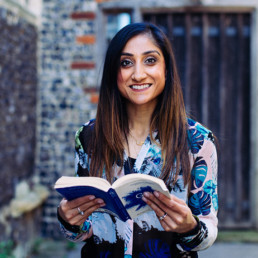
Written by Zahara Chowdhury
Zahara is founder and editor of the blog and podcast, School Should Be, a platform that explores a range of topics helping students, teachers and parents on how to ‘adult well’, together. She is a DEI lead across 2 secondary schools and advises schools on how to create positive and progressive cultures for staff and students. Zahara is a previous Head of English, Associate Senior Leader and Education and Wellbeing Consultant.
This year’s theme for SAHM is beautiful: free to be me. As we celebrate lived experiences, storytelling and authenticity, it seems only right that freedom and embracing our individual narratives is next.
This year’s theme has made me think where have I felt my most free? It’s not an easy question to answer. You see, growing up South Asian, (in my case, a British Pakistani Muslim, who’s family was born and raised in Africa), masking your identity can often feel normal, particularly when masking makes you feel safe in public, school and at work. Returning home, comes with its own comforts and conflict: finding joy in your culture and sticking out because you don’t really ‘fit’ within it either. Freedom then becomes a rather grey area and one that does not feel easily attainable.
Over the years, particularly I adulthood, there are a few spaces where I have come close to ‘free’: one was in my classroom. When teaching, my classroom was predominantly full of students who looked like me, shared similar lived experiences and most importantly we connected over an understanding of shared ambitions, aspirations and values. I felt free in an office with a colleague who shared my heritage; breaktimes and lunchtimes were full of laughter, candid conversations and asking each other, ‘what did your mum use to store atta in the kitchen?’, ‘were your sofas covered in shrink wrap too?’
Since then, I have felt most free in conversation with South Asian educators across the sector, most recently in conversation learning all about the wonders of Pehalwaan Juice (if you know you know…I definitely didn’t!). In many ways I share this with caution: for someone who works to amplify diversity, is there a problem if my freedom is sought and felt within my own community? Do I then just enjoy being a part of my own echo chamber?
The answer is no. Within these spaces diversity thrives. Diversity of thought, feelings, faith, work, experiences – being South Asian does not make us all one and the same and every South Asian friend, colleague and student I have connected with has a different story and identity. If anything, the freedom I feel in these spaces makes me more determined to centralise my identity in mainstream spaces too.
My childhood and teen years were branded with the term ‘coconut’ – in many ways, I didn’t think much of it then and I don’t think much of it now. What I do think about now though is how the identity of a ‘coconut’ lacked freedom. Consciously and subconsciously (and I really hope fellow South Asians can relate) I spent my childhood and adolescence straddling between several identities, depending on the audience – and I happened to be pretty good at it; I still am (we are pros when it comes to masking). I (still) do not know enough about my heritage, and I still don’t feel very ‘white’ either. Perhaps this is what imposter really means.
I studied all of this at university, wrote about it for my dissertation. 15 years later, specialising in a field that very much reflects the truth of my life couldn’t be more imperfectly perfect, no matter how much I question it on a daily basis (awareness and celebratory months are only one piece of the ‘work’). If anything, my experiences as a teacher and now EDI trainer, speaker and consultant are in some ways liberating and in other ways, revealing of just how far ‘we’ (marginalised and minorities in the West) have to go to be free.
South Asian Heritage is rich, diverse, nuanced and just huge – I am so naive and ignorant of its beauty. There is so much to learn. I’m not sure I’m free to be me just yet…but I think (and hope) we’ll get there soon.
In light of this and all of the learning and connections we have to make, I’m excited to share a space, network and group for South Asian Educators to connect, talk and be. Assistant Headteacher and Author, Yamina Bibi has said, the network will be a space ‘for anyone who is looking for a safe space for those of South Asian heritage. The challenges and issues facing South Asian Educators is somewhat different to those from other heritage groups as they are often thought of as the hard workers, obedient, quiet, shy, oppressed by colleagues and society in general. This network will support more educators to have their unique voices heard.’ We want this network to be collaborative, safe, empowering and a community where we can learn from one another too. Please Join us here!
Advancing Black history education in the UK
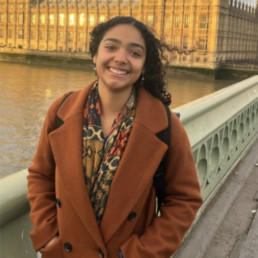
Written by Katie D'Souza
Katie D'Souza is a recent MA Education graduate, whose dissertation titled "Understanding the impact of 'our island story': exploring feelings of identity and belonging for Black British students" is currently under review for publication in the Curriculum Journal. Katie has since worked for a small business called The Educate Group, supports university staff to diversify their curricula and lead more inclusively, and now works at the Office of the Children's Commissioner, helping to ensure that the government listens to the voices of the children and young people living in this country.
Did you know that you can ask your MP to host a roundtable for you in parliament? The Black Curriculum (TBC) founder, Lavinya Stennett, certainly knew this, and last week took the opportunity to bring together key players in the Black history sphere for a critical discussion of Black history education in the UK, hosted by Bell Ribeiro-Addy MP.
TBC’s mission is to work with key stakeholders to embed Black history into the national curriculum. This roundtable sought to find practical and productive actions for ways to achieve this, and further cemented the determination for Black history to be meaningfully incorporated into the national curriculum, all year round.
With contributions from Professor Deirdre Osborne, expert in feminism, race and poetics, Michelle Codrington Rogers, citizenship teacher and NASUWT President, and award-winning history teacher and author Shalina Patel, amongst others, participants left this roundtable energised to arm the next generation of students (and ultimately leaders) with the comprehensive knowledge of history they need to navigate our increasingly globalised world.
A survey conducted by Bloomsbury in 2023 found that more than half (53%) of those surveyed could not name a Black British historical figure, and that only 7% could name more than four. The same survey suggests that less than 1 in 10 Brits believe that Black people have resided in England for more than 1000 years, assumptions erring towards 200 years, when in fact the answer in closer to 2000. Is this really the state of our history education system at the moment?
More can, and should, be done. Teaching Black history does not just build essential knowledge about structural and institutional racism, and Black brilliance, joy, and success. It also helps to create a sense of belonging for students with diverse heritage in UK classrooms, which may even serve to improve attainment and academic progress.
However, as it stands, the only mandatory (statutory) topic on the Key Stage 3 history curriculum is the Holocaust. Whilst the Department for Education has defended this set up as giving schools and teachers the freedom and flexibility to include Black history, in practice, the non-statutory nature translates as schools having little incentive to change their existing approach to history.
Shalina’s powerful account of her experience as a history teacher of 15 years spoke to the importance of the supportive leadership team in her school giving her both the time and resources to construct a department that is committed to building an inclusive history curriculum.
Unfortunately, this is not the case for everyone. When there is resistance to change at management and/or senior leadership team level, it can make it really difficult for teachers to do this important work alone.
Bell’s remarks further emphasised the role that teacher confidence and resources play in delivering a comprehensive Black history education. She reasoned that all teachers must be equipped to do justice to Black history in the classroom, so that the responsibility does not fall solely on teachers of colour. TBC’s resources are a great way to begin to do this, as Robert Primus, a secondary school history teacher, advocated, but this must be paired with some more concrete changes to the way history is taught in our schools.
Therefore, in the face of a general election in July, we urge the next government to consider the following asks from TBC and the other participants at this roundtable:
1 Introduce mandatory racial literacy training
The consensus at the roundtable was that we know teaching Black history is essential but that there are real, practical barriers to achieving this widely across the UK. TBC together with sisters Naomi and Natalie Evans who founded Everyday Racism ask that the next government introduces mandatory racial literacy training for school staff and leaders, under the rationale that racial literacy acts as a form of safeguarding for students from diverse backgrounds. Every adult interacting with children and young people must understand the intersectionality of identity in the UK and how the way that narratives and histories are told in the classroom deeply affects the sense of self and belonging of those listening. It’s imperative that teachers are given the time, headspace and resources to become more racially literate, and we believe making this training statutory is the way to make this happen.
2 Make Black history a statutory part of the curriculum
Recent RSHE guidance published by the Department for Education has proven that if they want to, the government is willing to prescribe what schools should and shouldn’t teach. Whoever forms the next government should make Black history a statutory part of the history curriculum. The reality is that value of teaching Black history for improving cultural understanding, increasing sense of belonging, and students seeing themselves reflected is unfortunately often overlooked by headteachers and senior leaders for whom the current school system places such great emphasis on grades and exam results. Making Black history statutory will support teachers to overcome challenge from their school leadership, as the content will be on official specifications and be included in exam materials too. There has already been some good progress in this space at Key Stage 4, where GCSE exam boards recently introduced a migration thematic study, covering migrants in Britain as well as the history of Notting Hill, but for the Key Stage 3 curriculum much remains to be achieved.
3 Equip teachers to meaningfully integrate Black history
Black history must not be seen as a tick-box exercise but should be meaningfully integrated into the curriculum. To realise this ambition, teachers must be equipped with the resources and empowered with the knowledge and confidence to do justice to Black history without ‘othering’ the stories of the past. For example, learning about Mansa Musa and the richness of West Africa before any mention of the transatlantic slave trade will support both teachers and students to reframe their understanding of Black history. Or when studying medieval England, to simultaneously look at medieval Mali, or Japan, or Baghdad. It is not necessarily a case of overhauling the whole curriculum, but weaving interesting and positive stories into the topics that are already so well known. It is about teaching a full history, not just the version constructed by the victors. As Bell summed up nicely, ‘you’re not learning a complete history if you’re not learning about black history’.
Mirrors, Windows and Sliding Doors: A Metaphor for the Diverse Curriculum

Written by Hannah Wilson
Founder of Diverse Educators
In the dynamic landscape of education, the curriculum serves as the foundation for shaping young minds. As we strive for a more inclusive and representative educational experience, the metaphor of Mirrors, Windows, and Sliding Doors offers a powerful framework for curriculum development. This metaphor, introduced by Dr Rudine Sims Bishop, encapsulates the essence of diversity, equity, inclusion and belonging within educational content, emphasising the importance of reflection, observation, and engagement for all learners.
Mirrors: Reflecting Students’ Own Lives
Mirrors in the curriculum are essential for students to see themselves – their cultures, identities, and experiences – reflected in what they learn. When students encounter stories, histories, and perspectives that resonate with their own lives, they feel validated and recognised. This reflection fosters a sense of belonging and self-worth, which is crucial for their overall development and academic success.
For curriculum specialists and subject leaders, this means incorporating diverse voices and narratives across all subjects. For example, in literature, selecting texts from a variety of authors who represent different backgrounds ensures that every student can see themselves on the page. In history, presenting a more inclusive perspective that acknowledges the contributions and experiences of marginalised groups and provides a fuller understanding of the past.
Windows: Viewing Others’ Lives
Windows offer students a view into the lives and experiences of people different from themselves. Through these glimpses, learners develop empathy, understanding, and a broader perspective of the world. Windows help dismantle stereotypes and prejudices, fostering a more inclusive mindset among students.
To create these windows, educators need to curate a curriculum that includes global perspectives and diverse narratives. In geography, this might involve studying various cultures and their relationships with the environment. In science, discussing contributions from global scientists highlights the universal nature of discovery. Providing opportunities for students to engage with content that portrays different lifestyles, beliefs, and challenges cultivates an appreciation for diversity and interconnectedness.
Sliding Doors: Engaging and Interacting
Sliding doors represent opportunities for students to enter into, and interact with, different worlds. This element encourages active engagement and personal reflection. When students can metaphorically ‘step into’ the experiences of others, they gain deeper insights of different identities and build meaningful connections.
Interactive projects, collaborative learning experiences, and role-playing activities serve as sliding doors in the curriculum. For instance, a history project where students re-enact historical events from multiple perspectives can provide profound learning experiences. In literature, writing assignments that ask students to create narratives from the viewpoint of characters unlike themselves can deepen empathy and understanding.
Integrating Mirrors, Windows, and Sliding Doors
To integrate these concepts effectively, curriculum specialists and subject leaders must be intentional and thoughtful in their approach. This involves:
- Reviewing and Revising Existing Curriculum: Conducting thorough audits to identify gaps and biases. Ensuring that the content reflects a diverse range of voices and perspectives.
- Collaborating with Diverse Communities: Engaging with parents/ carers, community leaders, and organisations to gather input and resources. This collaboration can enrich the curriculum with authentic, representative materials.
- Providing Professional Development: Equipping teachers with the skills and knowledge to deliver an inclusive curriculum. Training on cultural competence, unconscious bias, and inclusive teaching strategiesl.
- Utilising Technology and Media: Leveraging digital resources to access a wider array of content. Using online platforms, virtual exchanges, and multimedia can bring diverse voices and experiences into the classroom.
- Encouraging Student Voice and Choice: Empowering students to share their stories and choose projects that reflect their interests and identities. Designing student-centred approach fosters a sense of ownership and relevance in their learning.
The metaphor of Mirrors, Windows, and Sliding Doors provides a robust framework for creating an inclusive and representative curriculum. By reflecting students’ identities, offering insights into others’ lives, and facilitating active engagement, educators can cultivate a learning environment that values diversity, promotes equity, centres inclusion and builds belonging. As curriculum specialists and subject leaders, embracing this metaphor not only enriches the educational experience but also prepares students to thrive in a diverse and interconnected world.
Do you feel like you belong at work? Here’s why it’s so important for your health, happiness and productivity.
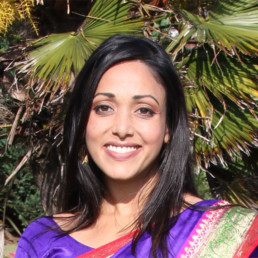
Written by Dr Nilufar Ahmed
Dr Nilufar Ahmed is a multi award winning Chartered Psychologist, Academic, and Accredited Psychotherapist. She works as an academic at the University of Bristol where her research and pedagogy focus on Inclusion and Engagement. Her work is situated in an antiracist and Intersectional framework. She is regularly invited to comment in the media on all things psychology and has delivered training, keynotes, and consultancy services across sectors including HE, business, and Government.
Originally published for The Conversation on May 9th 2024, republished with author’s permission.
We all want to feel like we belong. Psychologists have known this for a long time, describing belonging as a fundamental human need that brings meaning to our lives.
Traditionally, this need was filled by family and community networks. But as society becomes more individualised, with many people moving away from their community and family, the workplace has become an increasingly important source of meaning, connection and friendship.
Many employers know the value of belonging, boasting that their organisation is like a family – a place where everyone is welcome and takes care of each other. But in reality, just being hired isn’t necessarily enough to feel like you belong. Belonging is about feeling accepted and included. This might mean feeling “seen” by your colleagues and manager, and that your work is recognised, rewarded and respected.
Most people want to do meaningful work, and belonging and feeling connected with others is part of this. Meaning in work may come from the job itself – doing something that aligns with our purpose – or from the relationships and roles people create in the workspace. Consider someone who has a (formal or informal) position of offering support to their colleagues. This sense of connection and belonging can make the job feel more meaningful.
Belonging is also good for business. Feeling excluded and lonely can lead people to disengage, negatively affecting their work performance. Surveys have found that over 50% of people who left their jobs did so in search of better belonging, with younger workers more likely to leave.
The exclusion that comes from not belonging can be as painful as physical injury, and feeling isolated can have a range of negative health impacts. In contrast, when employees feel they belong, they are happier and less lonely, leading to greater productivity, fewer sick days and higher profits.
In my role as a psychotherapist, I work with countless people who feel unsupported and alone in the workplace due to direct or indirect discrimination and exclusion. The instinctive response can be to work harder to be accepted and belong – but this can lead to burnout, trying to get the approval that might never come.
The pandemic altered how we think about and engage with work. Some businesses may feel that bringing people back into the office is the answer to building connections and fostering belonging. But the truth is such actions alone could have the opposite effect.
People may withdraw and become less connected in such spaces. Those who prefer working from home may feel unsupported by their workplace if they have to come in to the office to deliver work they can do equally, if not more productively, at home.
On the flip side, for some people, being in the office offers a sense of belonging and connection that can be missing when working from home. Ideally, enabling a balance between the two allows people to benefit from the advantages of both spaces and work in a way that maximises productivity and connection. But it may be some time before employers figure out how to get the balance right.
Finding belonging
Belonging is particularly important to consider as workplaces become more diverse. Workplace discrimination is more likely to be experienced by marginalised groups, and is a major barrier to belonging.
Employees in organisations that are more diverse, particularly in senior leadership positions, are more likely to feel a sense of belonging. Diversity is also related to greater productivity and profitability. But organisations must consider the diversity distribution. While grand statements of inclusion may attract new workers, if the senior leadership team is predominately white and middle class, these statements have little meaning.
For diversity to effectively create belonging, it has to go hand-in-hand with psychological safety. This means that everyone – not just those who share characteristics with the majority or the leaders – feels they have a voice and are listened to. A workplace where people feel nervous about raising concerns, are worried about making mistakes, or feel there is a lack of transparency is one that is lacking in psychological safety.
When people feel unable to bring their authentic selves to work, they may end up performing different identities or codeswitching – adjusting their language – to become more “acceptable” and fit in. These strategies initially help workers create a sense of safety for themselves in the workplace, but can result in exhaustion and burnout.
Creating ways that people can express their authenticity – for example, through employee resource groups such as women’s staff networks – can create a safe space to share with others who have similar experiences in the workplace. For those who are self-employed or work mostly from home, to combat isolation, consider finding online groups or local coworking spaces that mirror the social benefits of a workplace community.
Employees feel more connected with the wider team when their efforts are recognised and rewarded. But this does not have to be through a pay rise or promotion – even an email from a manager can boost someone’s sense of belonging. The more recognition and appreciation for the work we put in, including from our colleagues, the more positive the benefit.
Not everyone has the opportunity to leave workplaces that make them feel unsafe or unhappy. If you are in this position, you can minimise the negative impact by finding connection and belonging outside of work, and reconnecting with people and activities that bring you meaning and joy.
New Official Study Guide for GCSE Set Text Leave Taking by Winsome Pinnock
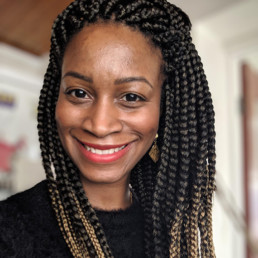
Written by Samantha Wharton
Samantha is a seasoned educator from East London, with ancestral roots tracing back to the Caribbean nations of Antigua and Guyana. She brings a wealth of academic achievements, including a degree in Communications and Media from Brunel University, a PGCE in English and Drama from the Institute of Education at University College London, and an MA in Black British Literature from Goldsmiths University.
A new official study guide for Leave Taking by Winsome Pinnock, authored by educators Samantha Wharton and Lynette Carr Armstrong, brings a fresh approach to GCSE English literature, enhancing the teaching and learning experience for GCSE English Literature students and teachers.
Samantha Wharton and Lynette Carr Armstrong bring a wealth of expertise from over 50 years of combined experience in education. As co-writers of this study guide, they have meticulously crafted an in-depth exploration of Leave Taking, ensuring that it delves into the nuances of the text with precision and clarity.
But what sets this study guide apart is its academic rigour and its authors’ lived experience and insight. As children of the Windrush generation, Samantha and Lynette possess a profound understanding of the worlds depicted in Pinnock’s play. Their lived experiences and living memories enrich the guide, providing readers with authentic perspectives that resonate with the characters and themes of Leave Taking.
Crucially, Samantha and Lynette had the privilege of consulting with Winsome Pinnock herself during the development of this guide. Pinnock’s invaluable commentary is woven throughout the text, offering readers a rare glimpse into the playwright’s mind and enriching their understanding of her work.
Leave Taking is not just another set text—it is a vital piece of literature amplifying Black voices and sharing insights into the Black British experience. Samantha Wharton and Lynette Carr Armstrong emphasise the importance of showcasing these narratives through Black voices with shared experiences. In a world where the Black experience has been historically erased, texts like Leave Taking must be unpacked and explored with sensitivity and nuance.
This study guide is more than just a pedagogical tool—it is a labour of love, insight, and experience. Samantha has taught Leave Taking at St Angela’s School in London, where staff and students have met it with enthusiasm. The diverse cohort of teachers at St Angela’s have thoroughly enjoyed teaching the text, while the students are excited to see modern characters that reflect their own experiences.
The release of the official study guide for Leave Taking by Winsome Pinnock marks a significant milestone in GCSE English literature. With Samantha Wharton and Lynette Carr Armstrong at the helm, educators and students can embark on a journey of discovery that celebrates Black voices, amplifies lived experiences, and enriches the educational landscape for generations to come.
The duo are committed to supporting teachers in implementing Leave Taking into the classroom. They will offer future training experiences, including workshops and seminars, to provide educators with the tools and insights to effectively teach this text. These training sessions will cover various aspects of the play, including thematic analysis, character studies, and classroom activities.
To inquire about future training opportunities or to reach Samantha Wharton and Lynette Carr Armstrong for further information on the study guide, educators can contact them via email at samantha.wharton@gmail.com and Lynettedcarr@hotmail.com. They are eager to collaborate with schools and educational institutions to enhance the teaching and learning experience of Leave Taking. They are available to answer any queries or provide additional support as needed.
The study guide has received recognition from Lit In Colour, a prominent platform championing diverse voices in literature. It was endorsed in their latest newsletter and featured in The (incomplete) Lit In Colour list, a curated collection of essential resources for educators looking to include diverse perspectives in teaching. This recognition reinforces the guide’s reputation as a valuable tool for promoting inclusivity and representation in education, making it indispensable for educators passionate about diversity and equity.
The official study guide for Leave Taking by Winsome Pinnock can be found through various channels. It is available on the Nick Hern Books website, the same publisher as the play, ensuring authenticity and reliability. Furthermore, the guide can be purchased on popular online platforms like Amazon!
The study guide and texts are available here:
https://www.nickhernbooks.co.uk/leave-taking-gcse-study-guide
https://www.nickhernbooks.co.uk/leave-taking-bundle-deal
https://www.amazon.co.uk/Leave-Taking-GCSE-Student-Guide/dp/1839041366
Press coverage about the play:
‘The godmother of Black British playwrights’ – Guardian on Winsome Pinnock
Guardian ‘Three decades since its debut Winsome Pinnock’s pioneering portrayal of the lives of black Britons feels shockingly contemporary… Pinnock was a pioneer and her piece still hits homethrough its often shocking honesty about the hazards facing black people in Britain’
Time Out ‘A devastatingly powerful story of a British-Caribbean family… whyWinsome Pinnock’s play isn’t on the English Literature syllabus is a mystery to me, given its shocking contemporary relevance… this play warms and devastates’
Two generations. Three incredible women. Winsome Pinnock’s play Leave Taking is an epic story of what we leave behind in order to find home. It premiered in 1987, and was revived at the Bush Theatre, London, in 2018, in a production directed by the Bush’s Artistic Director, Madani Younis.
Five reasons why schools should teach Princess & The Hustler at GCSE
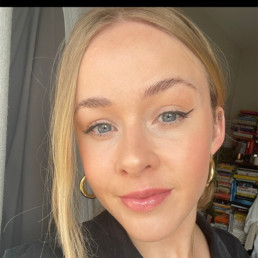
Written by Jessica Tacon
Jessica Tacon is second in charge of the English Department at City of London Academy Highgate Hill and is a member of NATE’s (National Association for the Teaching of English) ‘Reviewing Literature’ working group. She created The Right Writing campaign which aims to improve racial diversity in English Education.
In September 2022, AQA launched ‘Spark something’ to inspire and support English teachers to teach their new set texts. To improve the diversity and inclusion of their English Literature GCSE offer, particularly racial diversity and inclusion, AQA introduced a new novel, My Name is Leon by Kit de Waal, as well as a new poetry cluster and two new plays: Leave Taking by Winsome Pinnock and Princess & The Hustler by Chinonyerem Odimba.
I was lucky enough to be asked by BBC Bitesize to become their lead writer on Princess & The Hustler. This is Odimba’s heart-warming and heart-wrenching story about Princess, a 10-year-old girl, and her family living in Bristol between Christmas 1962 and September 1963. In the play’s opening scene, her father, The Hustler, returns after being away for a long time. Throughout the plot, Princess dreams of being winner of Weston-super-Mare’s Beauties of the West contest; Odimba says that part of her motivation for writing the play was to allow young Black girls to feel “beautiful” as well as “strong and capable”. The story is set against the backdrop of the Bristol Bus Boycott of 1963. At this time, the Bristol Omnibus Company was upholding a colour bar, which meant that they refused to hire Black or Asian bus drivers or conductors. The people of Bristol protested against this racial discrimination by refusing to ride the buses.
After the initial research stage, BBC Bitesize asked me to write revision-focused content for their website on the text. By this point I was already in love with Princess as well as Odimba’s story of family, struggle, and self-love. Below are five (of many) reasons why I believe schools should absolutely be teaching this text as part of the AQA modern text section of the literature GCSE.
Reason 1: Young people need stories about people like them fighting for what they believe in
From early in the play, Wendell Junior, Princess’ older brother, is a devoted fighter of the cause of the Bristol Bus Boycott. He attends marches and speaks passionately about the need for change. Young people are the future, and this important aspect of the story can remind them just how much power their voices and actions can have.
Reason 2: The play communicates important lessons and messages
The play, in very nuanced ways, teaches important lessons that will genuinely help students to understand themselves and to navigate the world around them. One example is the colourism that Princess experiences throughout the book which is often very subtle. There is an instance where her lighter skinned half-sister, Lorna, is invited to a birthday party by a girl at school, but she is not. Odimba does not explicitly point out that this is the reason why Princess is not invited, but the reader is encouraged to infer this through careful hints. This is an important lesson about how prejudice and discrimination are often insidious. However, this in no way means that these instances are any less harmful. This will show students that not all prejudice has to be explicit and obvious to be wrong and painful.
Reason 3: The historical events are part of England’s history
Princess & The Hustler sheds light on a very important period in England’s history. It absolutely should be taught in a specification which aims to help young people to “appreciate the depth and power of the English literary heritage”.
Heritage does not happen and is not learnt about in a vacuum; teaching texts about England’s heritage, whether showing aspects of the country in a good or bad light, are an asset to achieving the aforementioned aim.
Reason 4: The play covers a variety of themes
I was reluctant for any of these reasons to be about the exam itself. However, of course, it would be somewhat irresponsible to teach texts to students at a GCSE level with no consideration as to how it will help them to succeed in their exams (and, in lots of ways, consequently their future). That said, Princess & The Hustler covers a variety of themes that offer opportunities for students to analyse in detail. Themes like family, love, conflict, prejudice, and power are all richly peppered and embedded throughout. Diversity has become somewhat of a buzzword. And yet, this play alone offers true diversity in the sense that in such a small story it covers so much.
Reason 5: Young people need stories about self-love
We are living in a world of social media and, heartbreakingly, growing numbers of mental health issues among teenagers. It seems necessary here to celebrate the fact that at its very core, this is a story about a girl who, against a lot of external barriers, learns to love herself.
Mavis, Princess’ mum, says to her when she is struggling with her self-image:
“Phyllis James you listen, and you listen good!//Whether your hair long or short. Skin good or bad.//Us…//Us…girls and women with our skin dark as the night, every shade of brown, glowing like fresh-made caramel, or legs spindly like a spiders we are everything that is beautiful on this earth.//And you…you the prettiest of them all because you are my girl”.
I think we can all agree that this is absolutely beautiful advice for young people to be exposed to.
For more information about the BBC Bitesize revision resource to accompany Princess & The Hustler, please visit www.bbc.co.uk/bitesize
Diversity in the Curriculum: The Vital Role of SMSC Subjects
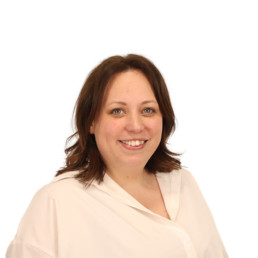
Written by Laura Gregory-White
Laura is an RE Regional Advisor for Jigsaw Education Group. She has over 15 years experience as an educator and curriculum lead across Primary and Secondary.
In today’s pluralistic society, where diversity is a fundamental part of who we are, conversations around diversity in schools and the curriculum are increasingly important. Subjects like Religious Education (RE) and Personal, Social, Health, and Economic Education (PSHE) are vital tools in our curriculum offering. Investing in these subjects, invests in our children and young people’s successful development of the skills and knowledge that help to navigate the complexities of our diverse world with empathy, understanding, and a commitment to social justice.
In Primary schools, where all the teaching staff will have an impact on curriculum development, it is crucial that we are giving them the necessary time and expertise to enable this. From the teachers developing and delivering the individual lessons, the subject leads with oversight for the entire curriculum journey, to the senior leaders who set the values that underpin curriculum design within a school. We all share the responsibility of designing curriculum that not only imparts knowledge but fosters a sense of belonging and inclusivity preparing our children to become global citizens. This journey begins with a deliberate and conscious approach to curriculum design. Every decision we make, from the voices we amplify to the resources we use, must reflect the diversity of human experience.
When facilitating discussions with RE subject leads on this topic, we speak about the implicit and explicit features of the curriculum. The implicit being those decisions we make as curriculum designers about what we include and represent. It means asking ourselves critical questions: What perspectives are included in our syllabi? Whose voices are being centred? Are we offering a diverse range of representation? These considerations extend beyond the mere content of our subjects; they seep into the language we use, the images we present, and the values we share. These decisions may not be explicitly obvious to the children in our lessons, but it frames a journey for them that better represents the world they are growing up in. Without this careful consideration, we can unintentionally establish an unconscious bias or reinforce stereotypes.
Alongside these implicit considerations is the explicit curriculum, where we dedicate time in lessons to directly address issues of diversity, equity, inclusion, justice, and belonging (DEIJB). It’s about more than just ticking boxes; it’s about fostering meaningful dialogue, challenging biases, and nurturing a culture of respect and understanding. SMSC subjects provide the structured opportunities for students to explore complex societal issues, interrogate their own beliefs and biases, and develop the critical thinking skills necessary to navigate an increasingly interconnected world. For staff to feel confident in leading these discussions, we need to support the ongoing development of their knowledge and understanding of these issues as well as the ways in which safe learning environments can be established, and discussion and debate can be managed. This will support them in feeling confident to plan in these explicit curriculum opportunities for our children.
This is not a small job or short conversation with a defined end point. This is ongoing work, and it should be contextual. It is important that schools support their staff to engage with this through investment in high-quality resources, providing the time and opportunity for evaluation and review, and dedicating time to ongoing learning and development for staff.
In a world dominated by technology, AI, and algorithms, education needs to do more than impart knowledge. It must nurture empathy, compassion, and a sense of collective responsibility. To achieve this, we must elevate and enhance subjects like RE and PSHE. They are essential components of a well-rounded education that prepares students to navigate the complexities of the modern world.

